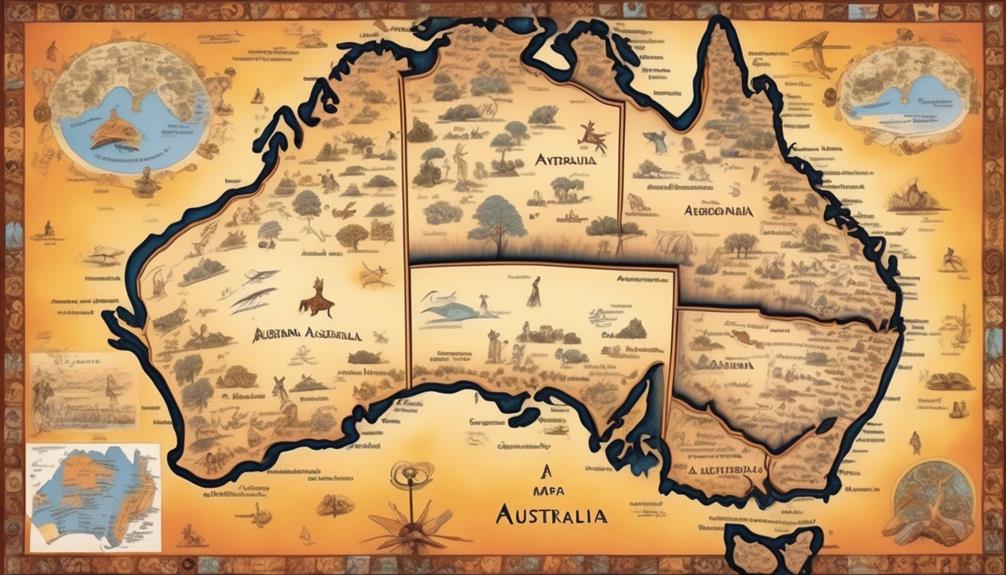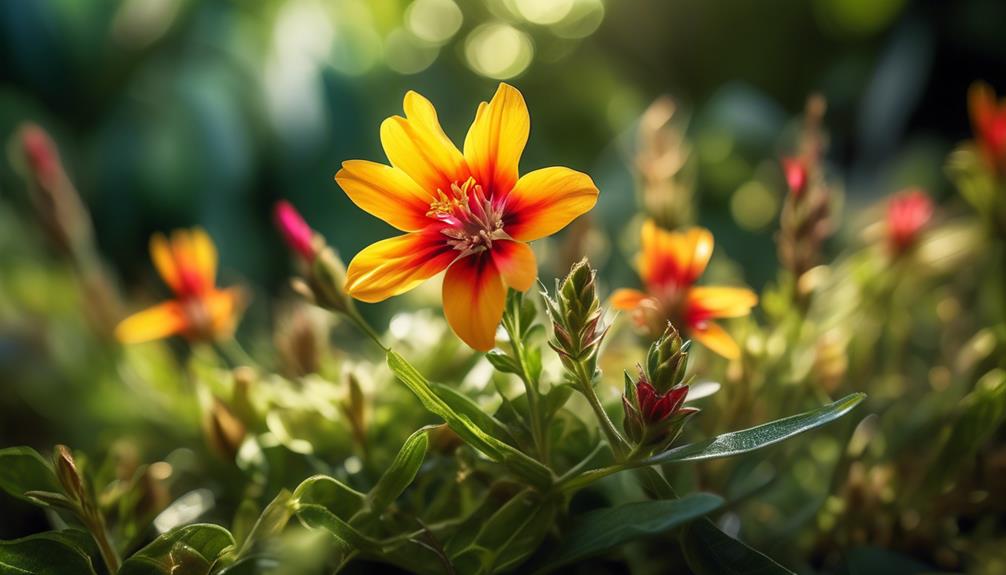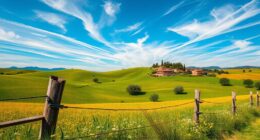How many years have Indigenous Australians been residing in Australia?
The answer to this question has long been the subject of debate and speculation among historians, archaeologists, and Indigenous communities. The exploration of this topic will uncover fascinating insights into the deep history of human occupation on the Australian continent, shedding light on the origins and connections of the world's oldest living culture.
As we delve into the evidence and research surrounding this issue, we will uncover the complex and rich tapestry of Aboriginal history, challenging our understanding of the ancient past and its enduring impact on the present.
Key Takeaways
- Aboriginal Australians arrived in Australia around 65,000 years ago, making them one of the oldest continuous cultures in the world.
- Aboriginal Australians developed sophisticated ways of living in harmony with nature, establishing thriving communities and demonstrating a deep connection to the land.
- Archaeological evidence, such as rock art, stone tools, and ancient middens, provides valuable insights into the spiritual beliefs, societal structures, and lifestyle of early Aboriginal communities.
- Genetic studies and oral traditions further affirm the deep connection of Aboriginal Australians to the land, their enduring cultural traditions, and the importance of understanding and respecting their heritage.
Early Human Arrival in Australia
Around 65,000 years ago, the first Aboriginal Australians arrived in Australia, making them one of the oldest continuous cultures in the world. Their early migrations and ancient settlements demonstrate a deep connection to the land and a rich cultural heritage.
As we explore the history of Aboriginal Australians, it's important to acknowledge their enduring presence and the valuable knowledge they've amassed over thousands of years.
Understanding the early migrations of Aboriginal Australians provides us with insights into their resilience and adaptability. Despite the challenges posed by a harsh and unfamiliar environment, these early settlers established thriving communities and developed sophisticated ways of living in harmony with nature.
Their ancient settlements weren't only a testament to their survival skills but also a demonstration of their profound understanding of the land and its resources.
Archaeological Evidence of Aboriginal Occupation
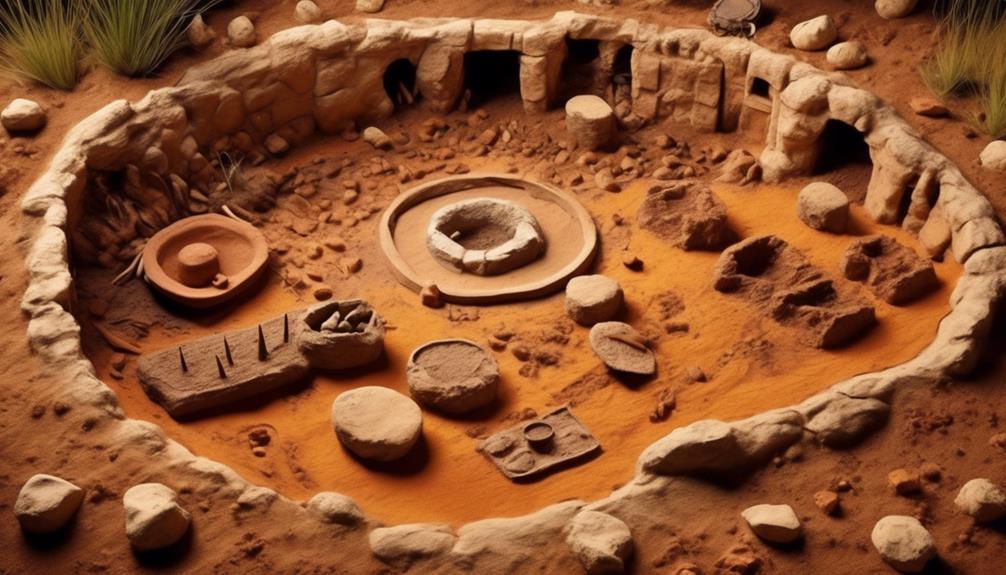
Examining archaeological records reveals compelling evidence of Aboriginal occupation in Australia dating back tens of thousands of years. The discovery of prehistoric artifacts and ancient settlements provides valuable insights into the rich history of Aboriginal Australians. Here are four key points to consider:
- Rock Art: Aboriginal rock art is one of the most prominent archaeological pieces of evidence, depicting intricate drawings and paintings that offer a glimpse into the spiritual and cultural beliefs of ancient Aboriginal communities.
- Tool Technology: Analysis of stone tools and implements showcases the ingenuity and adaptability of early Aboriginal Australians. These artifacts provide evidence of sophisticated tool-making techniques and the ability to utilize natural resources effectively.
- Middens: Examination of ancient middens, which are essentially discarded food and artifact deposits, offers valuable information about the diet, lifestyle, and societal structures of early Aboriginal communities.
- Habitat Remnants: The identification of ancient campsite remnants and shelters provides crucial evidence of how Aboriginal Australians adapted to various environmental conditions, demonstrating their deep understanding of the land and its resources.
Studying these archaeological findings not only enriches our understanding of prehistoric Aboriginal cultures but also honors their enduring connection to the Australian landscape.
Genetic Studies and Aboriginal Ancestry
The exploration of genetic studies and Aboriginal ancestry offers a deeper understanding of the enduring legacy of Aboriginal Australians, complementing the insights gained from archaeological evidence of their ancient occupation in Australia. Genetic studies have revealed crucial information about the migration patterns and cultural connections of Aboriginal Australians. Through the analysis of mitochondrial DNA and Y chromosome markers, researchers have been able to trace the ancient migration routes of the first Aboriginal Australians, providing insights into their complex and rich ancestral heritage.
| Genetic Studies | Aboriginal Ancestry | Migration Patterns | Cultural Connections |
|---|---|---|---|
| Mitochondrial DNA | Deepens understanding of ancestry | Reveals ancient migration routes | Highlights diverse cultural ties |
| Y Chromosome Markers | Traces paternal lineage | Sheds light on historical movements | Demonstrates interconnectedness |
These genetic studies not only contribute to scientific knowledge but also affirm the deep connection of Aboriginal Australians to the land and their enduring cultural traditions. Understanding their ancestry through genetic studies is a way of honoring and respecting their heritage, serving to strengthen the appreciation for their enduring legacy.
Oral Traditions and Indigenous Knowledge
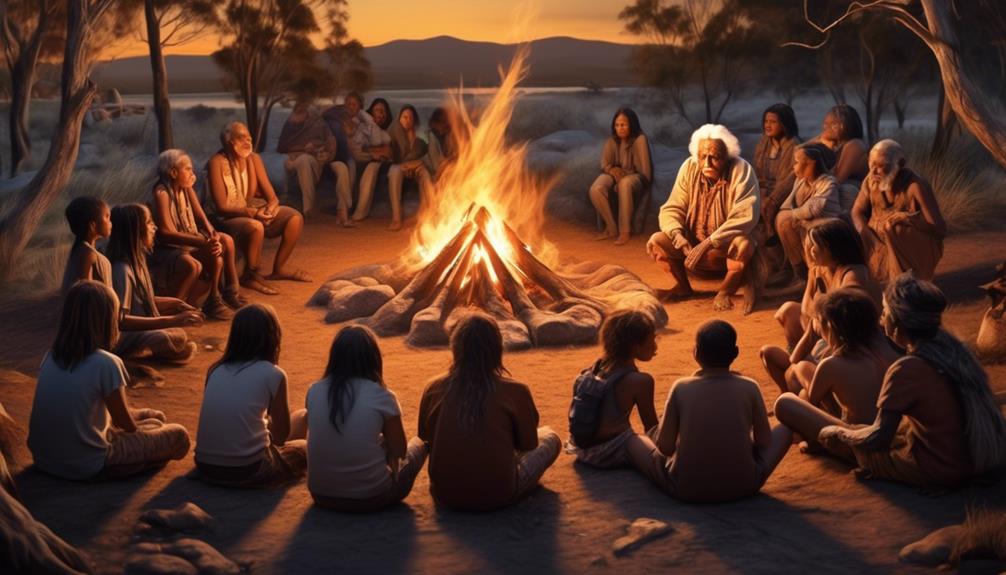
How do oral traditions and indigenous knowledge contribute to our understanding of the cultural heritage of Aboriginal Australians? Indigenous storytelling and traditional knowledge play a vital role in preserving and passing down the rich cultural heritage of Aboriginal Australians. Here are four ways in which oral traditions and indigenous knowledge contribute to our understanding:
- Preservation of History: Indigenous storytelling serves as a primary means of passing down historical events, cultural practices, and traditions from one generation to another, providing valuable insights into the past.
- Cultural Identity: Traditional knowledge contributes to the preservation of cultural identity, fostering a sense of belonging and continuity within Aboriginal communities.
- Connection to Land: Indigenous knowledge is deeply intertwined with the land, encompassing sustainable land management practices, ecological knowledge, and spiritual connections to the environment.
- Interconnectedness: Through oral traditions and indigenous knowledge, Aboriginal Australians uphold a holistic worldview that emphasizes the interconnectedness of all living things and the importance of maintaining harmony within the natural world.
Understanding the significance of oral traditions and indigenous knowledge is essential for appreciating the depth of Aboriginal cultural heritage and the enduring connection to the land.
Debates and Controversies in Aboriginal History
Frequently, debates and controversies in Aboriginal history provide valuable insights into the complexities and diverse perspectives surrounding the experiences and narratives of Aboriginal Australians. One such debate revolves around historical revisionism, where differing interpretations of historical events and their significance are contested. This can lead to a reevaluation of established historical narratives and a deeper understanding of the complexities of Aboriginal history.
Additionally, discussions on cultural continuity spark controversy, as they challenge mainstream historical perspectives and highlight the resilience and enduring traditions of Aboriginal cultures.
These debates and controversies are essential as they prompt critical reflection, encourage the reexamination of historical accounts, and contribute to a more comprehensive understanding of Aboriginal history. By engaging with these contentious issues, we can better appreciate the richness and diversity of Aboriginal experiences and honor their enduring cultural traditions. Moreover, they urge us to acknowledge the impact of historical revisionism and the significance of cultural continuity in shaping the narratives of Aboriginal Australians.
Ultimately, these debates and controversies serve to deepen our understanding and respect for the complexities of Aboriginal history.
Frequently Asked Questions
How Did Aboriginal Australians First Navigate to Australia From Other Parts of the World?
We believe Aboriginal Australians first navigated to Australia through maritime navigation and Indigenous migration. They likely utilized their deep knowledge of the land, sea, and celestial navigation to make the journey.
Evidence suggests that they may have arrived in Australia over 50,000 years ago, making them the world's oldest continuous culture. Their remarkable navigation skills and resilience allowed them to establish thriving communities across the continent.
What Were the Main Sources of Food and Resources for Early Aboriginal Australians?
Well, the main sources of food and resources for early Australians were hunting, gathering, fishing, and using tools to cultivate plants. The land provided us with a rich variety of plants, animals, and natural materials, allowing us to sustain our communities.
We relied on our knowledge of the land and its resources to thrive, demonstrating our deep connection to the environment and our ability to adapt to different landscapes.
How Did the Arrival of Europeans Impact the Oral Traditions and Indigenous Knowledge of Aboriginal Australians?
The arrival of Europeans had a significant impact on the oral traditions and indigenous knowledge of Aboriginal Australians. This impact threatened the cultural preservation of their rich heritage.
The introduction of new languages, technologies, and societal structures caused disruptions in the transmission of traditional knowledge.
Despite these challenges, Aboriginal communities continue to work tirelessly to safeguard and pass down their oral traditions and indigenous wisdom, ensuring the preservation of their cultural heritage for future generations.
What Role Did Climate Change Play in Shaping the Early History of Aboriginal Occupation in Australia?
Climate change has significantly shaped the early history of Aboriginal occupation in Australia. It affected migration patterns and forced our ancestors to adapt to new environments. The changing landscapes and resources influenced where and how Aboriginal people settled across the continent.
Understanding these impacts helps us appreciate the resilience and resourcefulness of our ancestors in navigating and thriving in the face of environmental challenges.
How Have Modern Conservation Efforts Affected the Preservation of Archaeological Evidence of Aboriginal Occupation in Australia?
Modern technology has greatly enhanced our ability to preserve and protect Aboriginal archaeological evidence in Australia.
Through advanced imaging techniques, we can document and study sites without causing damage.
Additionally, digital databases allow for the storage and sharing of important cultural heritage information.
These efforts are essential for ensuring that Aboriginal occupation evidence is safeguarded for future generations to appreciate and learn from.
Conclusion
In conclusion, it's incredible to think that Aboriginal Australians have been in Australia for at least 65,000 years, making them the world's oldest living culture.
This statistic truly highlights the deep connection and enduring presence of Aboriginal people in Australia, and it's a testament to their resilience and strength as a community.
